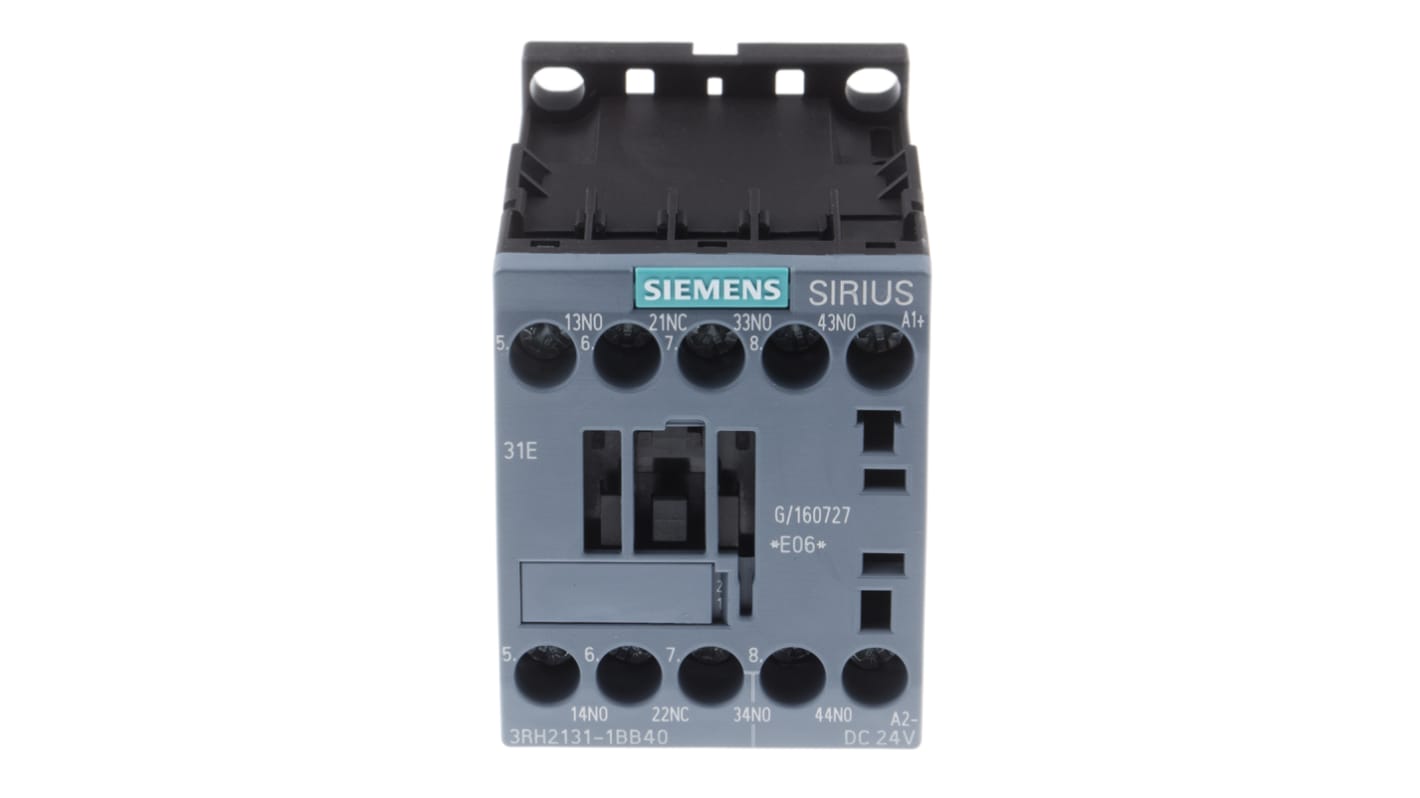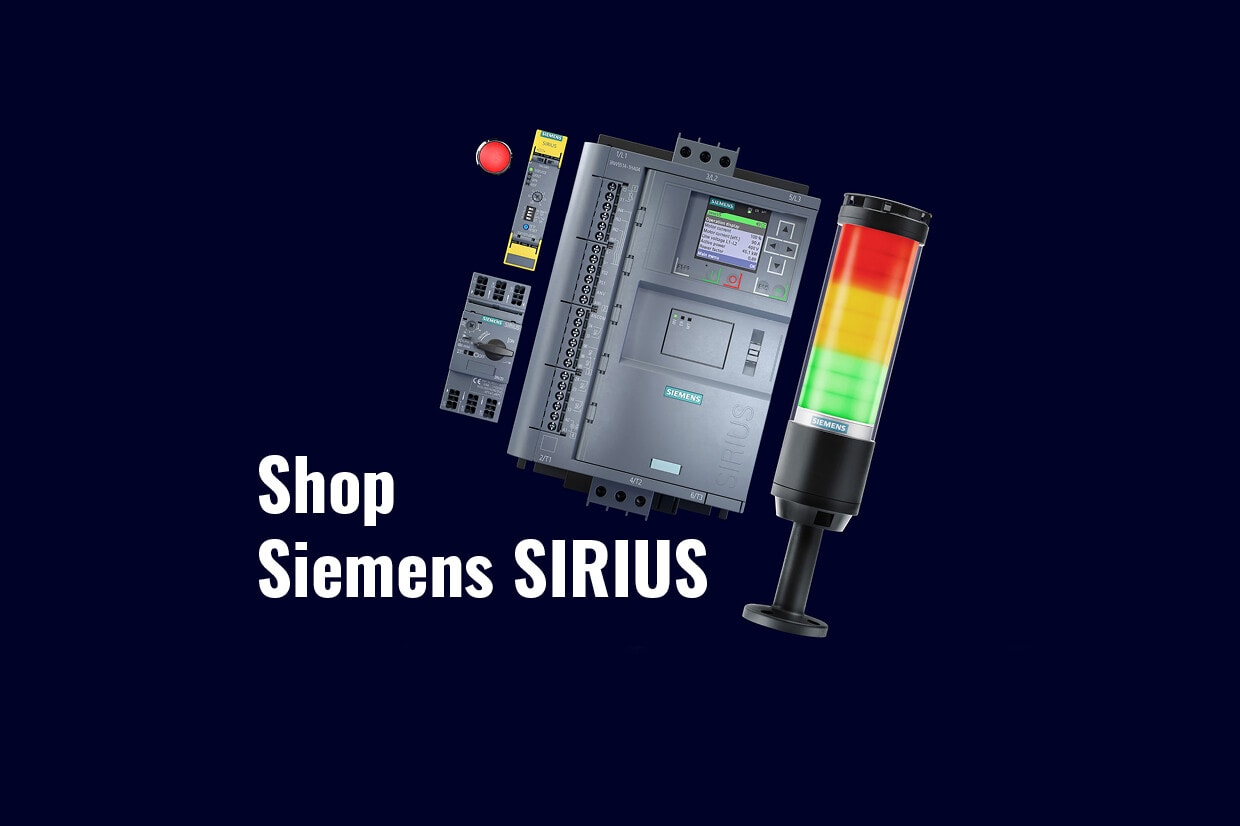Siemens SIRIUS 3RH2 Contactor Relay, 24 V dc Coil, 4-Pole, 10 A, 3NO + 1NC, 690 V ac
- RS Stock No.:
- 746-0743
- Distrelec Article No.:
- 136-23-012
- Mfr. Part No.:
- 3RH2131-1BB40
- Brand:
- Siemens

Subtotal (1 unit)*
£34.08
(exc. VAT)
£40.90
(inc. VAT)
FREE delivery for orders over £50.00
In Stock
- 177 unit(s) ready to ship
- Plus 97 unit(s) ready to ship from another location
- Plus 100 unit(s) shipping from 03 December 2025
Need more? Click ‘Check delivery dates’ to find extra stock and lead times.
Units | Per unit |
|---|---|
| 1 + | £34.08 |
*price indicative
- RS Stock No.:
- 746-0743
- Distrelec Article No.:
- 136-23-012
- Mfr. Part No.:
- 3RH2131-1BB40
- Brand:
- Siemens
Specifications
Technical Reference
Legislation and Compliance
Product Details
Find similar products by selecting one or more attributes.
Select all | Attribute | Value |
|---|---|---|
| Brand | Siemens | |
| Coil Voltage | 24 V dc | |
| Number of Poles | 4 | |
| Contact Voltage Rating | 690 V ac | |
| Contact Current Rating | 10 A | |
| Range | SIRIUS | |
| Series | 3RH2 | |
| Normal State Configuration | 3NO + 1NC | |
| Number Of Auxiliary Contacts | 4 | |
| Terminal Type | Screw | |
| Width | 45mm | |
| Length | 57.5mm | |
| Depth | 73mm | |
| Maximum Operating Temperature | +60°C | |
| Control Voltage | 24 V dc | |
| Mounting Style | DIN Rail Mount | |
| Minimum Operating Temperature | -25°C | |
| Select all | ||
|---|---|---|
Brand Siemens | ||
Coil Voltage 24 V dc | ||
Number of Poles 4 | ||
Contact Voltage Rating 690 V ac | ||
Contact Current Rating 10 A | ||
Range SIRIUS | ||
Series 3RH2 | ||
Normal State Configuration 3NO + 1NC | ||
Number Of Auxiliary Contacts 4 | ||
Terminal Type Screw | ||
Width 45mm | ||
Length 57.5mm | ||
Depth 73mm | ||
Maximum Operating Temperature +60°C | ||
Control Voltage 24 V dc | ||
Mounting Style DIN Rail Mount | ||
Minimum Operating Temperature -25°C | ||
- Datasheet_3RH2131-1BB40
- Sirius Innovation Accessory Guide
- Sirius Innovation Catalogue
- Sirius Innovations Switching Devices
- Solutions for frequent switching or soft starting
- Basic Information
- Siemens Sirius Migration
- Sirius: Migrating From Classic to Innovation
- Catalogue - Switching Devices
- Environmental Product Declaration - Overview
- Environmental Product Declaration
- COO (Country of Origin):
- DE
Siemens SIRIUS Innovation Contactor Relay, 3NO/1NC, 10A Contact Rating - 3RH2 Series - 3RH2131-1BB40
Need a reliable contactor relay for damping opening surges? This four-pole contactor relay from Siemens' SIRIUS Innovation range offers you the reassurance of effective overload protection to prevent damage to electric motor windings and coils. You can use it with solid-state circuits that have currents above 1mA at voltages over 17V. This device can be easily plugged onto all contactor relays to suppress the opening surge in the coil, allowing you to start electric motors without risk of damage.
• Operating temperature range of -25°C to +60 °C for efficiency in tough industrial environments
• Screw terminals to make secure connections quickly
• 24V DC coil voltage for resistance to the control circuit drop caused by high inrush
• IP20 (ingress protection) rating means it'stouch-proof and resistant to dust or objects larger than 12mm
• Screw terminals to make secure connections quickly
• 24V DC coil voltage for resistance to the control circuit drop caused by high inrush
• IP20 (ingress protection) rating means it'stouch-proof and resistant to dust or objects larger than 12mm
What is overload in electric motors?
Overload is when a motor draws a current higher than it's rated for over an extended period. It's also known as overcurrent and is one of the main causes of failure in electric motors.

